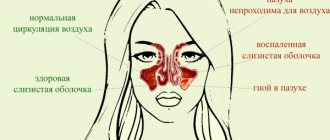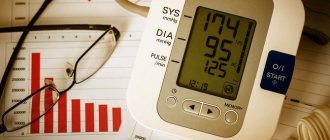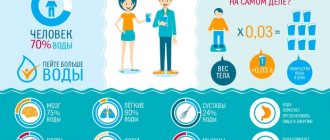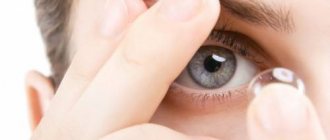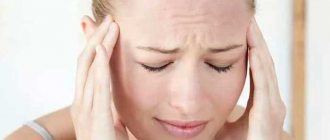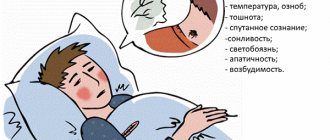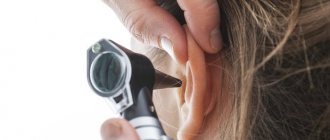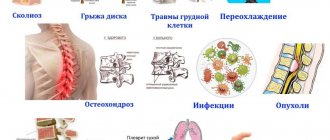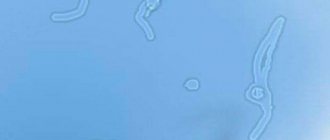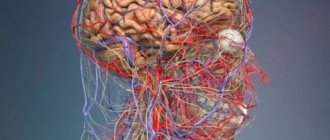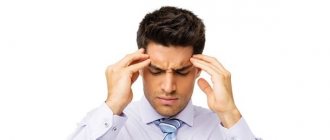Why does my head hurt and the forehead and back of my head press on my temples?
Headache #8212; the symptom with which patients most often seek medical help. More than 60% of patients with headaches are people of working age. In this article we will try to describe the causes of headaches in the back of the head, as well as in the temple and forehead.
The main causes of headaches in the back of the head
High blood pressure #8212; The reason directly depends on blood pressure.
Physical or mental stress, stress (tension headache) #8212; The pain is tight, squeezing, dull, aching, not pulsating. The head feels like it’s being held in a vice or tied with a tight bandage.
Diseases of the cervical spine (osteochodrosis, spondylosis - proliferation of osteophytes, etc.)
Muscle thickening in the cervical region (myogelosis) #8212; Causes: injuries, poor posture, prolonged muscle tension, hypothermia.
Neuralgia of the occipital nerve #8212; The pain is sharp, sharp, paroxysmal, often radiating to the neck, ears, lower jaw
Cervical migraine #8212; The pain is intense, accompanied by a feeling of sand in the eyes, dizziness, hearing loss
Headaches in the temple and forehead area can be caused by various causes and reflect symptoms of more than 40 diseases. The nature and intensity of pain directly depend on the cause of the pain and the individual characteristics of the patient.
Causes of headaches in the temples
The pain in this case is pulsating in nature and is accompanied by emotional outbursts that appear when climate conditions change. Pain syndrome may be a consequence of impaired tone of cerebral vessels (both venous and arterial).
Pain in the temples in young people often manifests as autonomic disorders, intracranial hypertension or migraine.
Pain in the temples can be a manifestation of some infectious diseases, including viral infections (flu, colds).
Some diseases that cause headaches in the temples are migraines and cluster pains in the head. An acute pain attack spreads along one side of the head, flies begin to “dance” in front of the eyes, taste and olfactory perception may become more acute, and sensitivity to other types of external irritations may increase.
Starting from puberty, migraine pain in the temples in women can occur in connection with the course of the menstrual cycle. In the early period, characterized by hormonal instability, they can be more pronounced, and during the first pregnancy they decrease or disappear altogether. Headaches are also caused by other hormonal disorders - for example, menopause in older women.
Severe, excruciating pain of a pulsating nature manifests itself in such a rare disease as temporal (or giant cell) arteritis - a specific inflammation of the arterial walls.
In some cases, the cause of headaches affecting the temples cannot be determined.
Causes of headaches in the forehead area
Headache in the forehead is a consequence of overwork or overexertion - the most common cause of nosology. The main symptom of the condition is the transfer of pain to the temples, the back of the head, and the eye area.
Neurological pain in the forehead may be a result of compression of soft tissues when wearing a narrow hat or other headgear.
Organic causes include inflammation of the paranasal sinuses (frontal sinusitis and sinusitis).
The etiological factor of pain in the projection of the forehead may also be increased intracranial pressure due to tumors, hematomas and other organic diseases of the brain. Cephalgia intensifies against the background of increased intracranial pressure when the weather changes.
Headache in the forehead occurs with certain types of infections:
- Meningitis (inflammation of the meninges);
- Malaria and typhus;
- Flu with localized pain in the temples, forehead and eyes;
- Dengue fever.
Sometimes nutritional supplements provoke headaches in the forehead area.
Headache in the forehead, temples, and occipital region is a polyetiological condition that can be cured only after identifying the cause.
Often the most important reason for the lack of intimate desire is poor
This superstition is widespread both among photographers and among ordinary
For hundreds of years, storks have been associated with children. In Greek mythology, they
An unpleasant and unusual body odor signals a variety of disorders.
Some gardeners are faced with the problem of leaf damage on
Our beloved pets surprise us every day. Sometimes it's nice
Immediately after childbirth in a woman who has given birth in any way - naturally
The conquest of vast territories greatly expanded the borders of the Frankish state. Now it's
The salinity of water in the oceans is almost everywhere close to 35 ‰,
The computer room contains expensive, complex and requiring careful
Treatment methods
Various medications and other methods are used to treat the condition. In each case, the specialist individually determines a regimen that will eliminate the symptom.
Medications
Depending on the patient’s condition and the cause of the disorder, medications are prescribed.
The most effective of them:
- Ibuprofen – a medicine that is used in cases where temporal pain is the only symptom or occurs as a result of overwork or increased body temperature. It is prescribed only when pain occurs, and not in courses. The daily dosage is 2-3 tablets depending on the intensity of the pain. The maximum duration of the course is 3 days. If the pain does not disappear during this period, you should consult a doctor, but do not continue use. Price – from 60 rub.
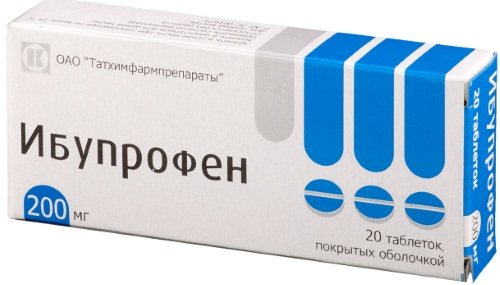
- Paracetamol is another remedy that comes in tablet form and is considered effective, helping not only to reduce body temperature, but also helps eliminate pain. You can take the product for 3 days, 2 tablets. The drug is used for physiological and pathological forms of pain. Price – from 30 rub.
- Citramon is a remedy that is used for pain caused by low blood pressure. The drug can be taken for 5 days, 2-3 tablets per day. The drug helps eliminate pain, rarely provokes complications and can also be used as part of a complex treatment of diseases that provoke pain. Price – from 20 rub.
- Actovegin is a remedy for improving the nutrition of brain tissue. It is used in case of pain as a result of hypertension, neurological pathologies, and vascular diseases. The product is suitable for patients who have previously suffered a stroke and some other conditions. It is worth noting that the solution must be used for 10-14 days to achieve a pronounced result. The daily dosage is 10 ml, the drug is administered intravenously. Price – from 300 rub.
- Atorvastatin is a tablet for lowering cholesterol levels in the blood, used in case of pain caused by atherosclerotic changes in blood vessels. The daily dosage for the patient is 2-3 tablets, depending on the severity of the condition. Take the drug for 2 weeks. Price – from 230 rub.
- Enalapril is a medication in tablet form, which is often prescribed to patients suffering from hypertension and temporal pain. The starting dose is 5 mg, but this may be increased as the condition progresses. The drug is taken on an ongoing basis, but the patient must regularly visit a doctor, who will adjust the dosage if necessary. Price – from 70 rub.
- Furosemide is a diuretic medication that is used when pain occurs due to cerebral edema and uncontrolled hypertension. The drug is administered intravenously or intramuscularly in a dosage of 2-4 ml, the course duration is 3-5 days. The drug does not directly affect the pain, but due to the removal of excess fluid, it disappears or is significantly weakened. Price – from 50 rub.
- Cerebrolysin – a solution that is used to improve blood circulation and nutrition of tissues in the brain. Helps eliminate pain caused by neurological diseases, spinal cord pathologies, and ischemic processes. The solution is administered intravenously in a stream of 10-20 ml per day for 2-3 weeks; it is considered very effective and significantly reduces the risk of complications. Price – from 400 rub.
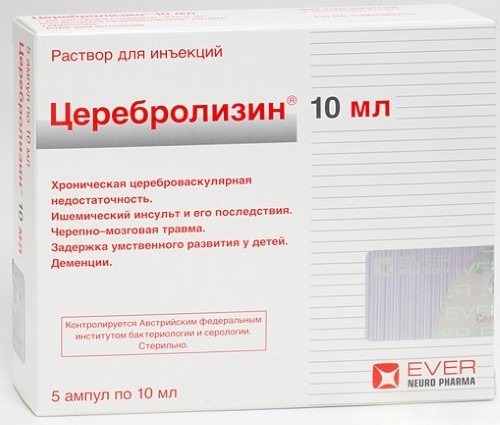
- Vinpocetine is a medication for dilating blood vessels, which is actively used to treat pain caused by pathological narrowing against the background of various disorders. The remedy helps improve blood circulation and prevents the recurrence of pain, despite the fact that it does not directly affect the symptom. The patient receives 2-4 ml of the product per day, previously added to 200 ml of saline solution. Treatment lasts at least 10 days. Price – from 80 rub.
- Tivortin is a solution in the form of a solution that is used for temporal pain caused by poor circulation and other disorders. The product helps improve blood circulation through the vessels, stimulates tissue repair and improves the condition of the vascular wall. As a result, pain is eliminated, although the product does not have analgesic properties. The solution is administered using a dropper in its pure form, 100 ml per day, treatment lasts at least 10 days. The price for 1 bottle is approximately 400-500 rubles.
It is worth remembering that all means are not used at the same time. The drugs, their dosage and duration of use depend on the original cause of the pain and the presence of associated complications. It is worth remembering that the products have contraindications and should not be used independently without a doctor’s prescription.
Traditional methods
Pain in the temples (a pulsating type of discomfort is quite common) cannot be eliminated with alternative medicine recipes, but some of them help alleviate the condition.
Treating the skin in the temple area with garlic juice is considered a good way to distract the patient from severe discomfort. To do this, you can chop the garlic and squeeze the juice out of it or treat the skin with a clove cut into 2 parts. Repeat the manipulation 3 times a day at intervals of 3-4 hours. Usually the condition improves in the evening. This method can be used for 3-5 days.
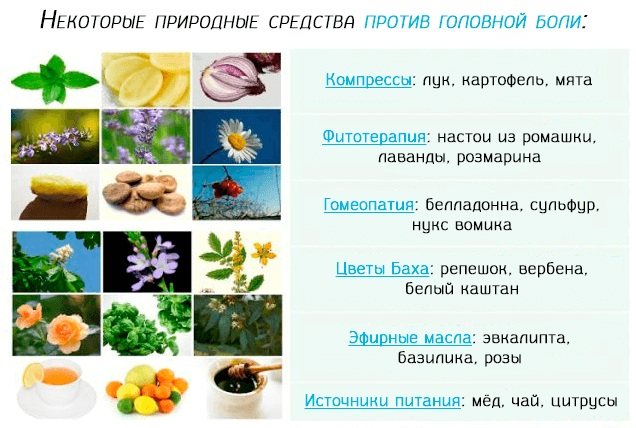
To alleviate the condition, you can apply a cold salt compress. To do this, add 1 tsp to 1 liter of warm boiled water. salt, then moisten a napkin or towel, apply to the forehead and temples, leave for 30 minutes. It is allowed to carry out the manipulation before bedtime, repeat 3-7 days in a row.
It is important to remember that in case of severe pain, methods will not help to radically improve the condition. It is also worth considering that the lack of effectiveness of home treatment is considered a reason to consult a doctor.
Other methods
The most common complementary therapy method is massage. It is effective for pain caused by neurological pathologies, metabolic disorders, and damage to the spinal column.
With the help of massage, you can influence all internal organs and systems, improve your general condition, and eliminate pain of varying intensity and origin. Massage should only be performed by a specialist in a medical institution. The session lasts from 25 minutes, depending on the severity of one or another symptom. The minimum course duration is 15-20 procedures.
It is worth remembering that massage has contraindications and often provokes complications if it is performed by a person who does not have professional skills. That is why only a doctor prescribes such treatment.
Throbbing pain in the head - causes and treatment. Medicines for throbbing pain in the head
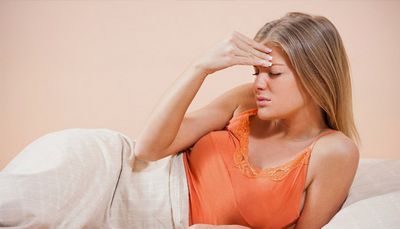
The very sensation of pulsation in different areas of the head occurs due to mechanical and regulatory changes in blood vessels. When filled with blood, they stop reacting correctly, at first they contract too much, then relax, which creates the sensation of having a “pulse”. Vascular spasms make it difficult for blood to flow to the right place, and when it relaxes, too much blood flows in. Such changes, as a rule, indicate disorders in the vegetative-vascular department of the central nervous system. The localization of throbbing pain in the head is different and indicates different diseases.
At the temples
A pulsating headache in the temples and eyes sometimes indicates incorrectly selected diopters or glasses. Because of this, the human visual apparatus is constantly in a tense state. It provokes pain in the eye area, which usually appears after the first half of the day. If your left temple hurts after sneezing or coughing (immediately), this indicates high blood pressure, which cannot be ignored.
If pain in the temporal lobe occurs after a head injury (even a mild one), then this indicates the presence of a concussion. With a constant pulsating nature of pain, suspicion falls on the development of encephalitis, meningitis or a pre-stroke condition. With such symptoms, you cannot do without the intervention of a specialist (osteopath), because the disease can lead to a fatal outcome.
Pain in the left temple and eye area may indicate the presence of migraine, glaucoma, or autonomic dysfunction. With a migraine, the head hurts severely for several hours or days, not longer. An attack can be triggered by changes in weather conditions, physical or emotional overload. Glaucoma has a different nature of occurrence, but is no longer related to headaches, but to problems with the eyes.
On the right side of the head
A throbbing pain on the right side of the head usually indicates a migraine. A mandatory feature of this disease is the alternation of sides of pain (first the right, then the left). If the pain is not sharp, of moderate intensity only on the left or right, this indicates the possible development of an extensive pathological process, for example:
- brain abscess;
- hemorrhages after injury;
- parasitic infestation;
- tumors.
In the back of my head
Which doctor should I contact?
Often, after physical exertion or mental stress, people feel worse. The nature of the pain can be varied. Compressive, pressing, throbbing pain in one side of the head is possible.
Pain during exercise is often functional in nature. They can occur for many reasons:
- Changes in temperature and atmospheric pressure;
- Stressful state during physical activity;
- Heat and stuffiness in the room;
- Dehydration is often the cause of headaches;
- Eat a large meal before training;
- Overweight people often suffer from hypoxia during exercise.
The likelihood of illness is higher in people with specialties: programmer, accountant, driver, who spend many hours at the computer or constantly strain the muscles of the eyes and neck.
Persistent cephalgia, which occurs regularly, requires mandatory consultation with a doctor in order to exclude serious pathology and prescribe the correct treatment in a timely manner.
The initial appointment should be made by a therapist. He will conduct a general examination, measure blood pressure, write out directions for tests and refer you to specialists.
If you have unpleasant sensations in the head and neck area, it is good to have a home blood pressure monitor, with which you can track pressure surges in different life situations. A rise in blood pressure after physical activity can often be the cause of pain.
Causes of pain in the temples

- Spasm of cerebral vessels. The nature of the pain is “vice”. Feeling of lack of air, rapid heartbeat, pallor, vomiting.
- Temporal arteritis. Throbbing headache in the temples, worsens when chewing or touching the temple area.
- The problem is preceded by weight loss.
- Anxiety, mental stress, lack of sleep, change of weather. The pain is moderate, pressing in nature. Your eyes may hurt, you may have nightmares, and you may lose your appetite.
- Migraine. An attack of intense painful pulsation begins in one half of the head, then becomes dull and can take over the entire head, radiating to the back of the head. Loss of energy and photophobia, nausea.
- Infections: sinusitis, sore throat, conjunctivitis, otitis media, sinusitis. Feelings of pressure from the inside out or aching pain.
- Hormonal changes: menopause, puberty, menstruation. Dull sensations of medium intensity.
- Sweating, mood changes.
- Arterial hypertension. Severe shooting, throbbing pain in the temples and the back of the head. When pressed, these places are extremely painful.
- Damage to the temporal joint. Very severe headaches, so this dental problem is confused with brain pathology. Cutting headaches in the back of the head and temples reaching to the shoulder blades. The jaws close reflexively.
- Damage to the vertebral artery. Unilateral burning sensation, the patient feels a pulsation, which intensifies after waking up. Impaired consciousness, hearing and balance, dizziness. Blood pressure rises quickly. Handwriting changes.
- Intoxication due to infections or alcohol, medications. Dull or bursting sensation. Stupor, convulsions, diarrhea, decreased blood pressure.
- Consequences of injury. Frequent headaches of various types.
- Neuroses, psychiatric diagnoses. For example, in schizophrenia it bursts from the inside and burns the head. The attack occurs periodically and ends on its own.
Possible complications
Pathology does not always lead to the development of serious complications if the pain is physiological.
However, often ignoring symptoms can lead to unpleasant consequences:
- Ischemic stroke.
- Hypertensive crisis.
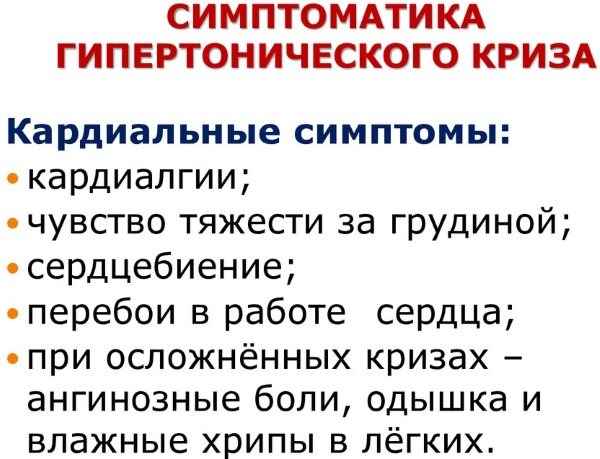
- Damage to blood vessels.
- Worsening of atherosclerotic changes.
- Myocardial infarction.
- Intervertebral disc herniation.
- Severe brain damage due to circulatory disorders.
Lack of treatment certainly leads to the development of complications, so symptoms should not be ignored.
Pain in the temples is considered one of the most common disorders in patients of all ages. The pulsating type of condition can be physiological or pathological. To identify the cause, it is necessary to undergo examination and treatment to eliminate not only the symptom, but also the root cause.
Causes of pain in the back of the head
- Cervical myositis. A shooting headache in the back of the head occurs when turning the head or on its own. The cause of muscle spasm is a draft. Enlarged lymph nodes, weakness, severe headache.
- Atherosclerosis of the brain. Varying intensity and duration of seizures. Sleep is disturbed, character traits change.
- Mental, physical stress. “Cuts” in the back of the head and neck, then the pain goes to the temples, the forehead hurts. Sometimes it is located only in the temporal part. Appears from hunger, lack of sleep, fatigue, anxiety.
- Osteochondrosis. Sharp “shots” when touching or tilting the head. Crunch in the neck, numbness and tingling in the limbs.
- Cervical spondylosis. An aching feeling from the back of the head shifts to the ears and shoulder joints; worsens in the morning, making it difficult to tilt and turn your head. Tingling or loss of sensation in an arm or leg.
- Neuralgia of the occipital nerve. "Shoots" in the morning with a focus in the back of the head. Photophobia.
- Barre-Lieu syndrome. Persistent dull one-sided pain, migraine-like. Starts from the neck and back of the head, and can move to the front of the head.
- Vertebrobasilar syndrome. Pulsating or squeezing sensation. Tinnitus, balance problems and blindness.
- Basilar type migraine. The focus of strong “shooting” is behind the head. Before an attack, you feel dizzy, vision deteriorates, your face around the mouth goes numb, and your limbs tingle;
- Arterial hypertension. “Shoots” and “pierces” in the morning. In addition to the temples, the back of the head hurts. High blood pressure. If you feel nauseous and have chest pain, you may have a stroke.
- Increased intracranial pressure. The pain bursts, pulsates, intensifies in the morning, with sneezing and coughing; does not go away after taking painkillers. The spine, neck and back hurt. Swelling of the face. Clouding of consciousness, seizures with convulsions, disturbance of sensory perception.
- Oncology. Very painful attacks. Vomit. Double vision, color hallucinations. Drowsiness, convulsions, epileptic seizures, paralysis of arms and legs.
- Intoxication. The pain syndrome is moderate, the sensation is dull, aching, radiating to the back of the head and temples. It happens with infections due to toxins released by microbes, with household poisoning, carbon monoxide, etc.
- Meningitis and encephalitis. The headache is acute, with seizures. Stronger with every attack. Fever, weakness, photophobia.
- Adrenal tumors. The nature of the pain is wave-like. Male-pattern hair growth in women, fat deposits on the back of the neck, on the hips, weakness, thinning of the skin, stretch marks.
- Migraine. A throbbing pain in the back of the head on one side, which comes on suddenly and presses on the eyes. Your temples hurt or you have a headache in the forehead. Hearing, vision, severe sweating, nausea are impaired.
- Hypoxia. The painful sensation is accompanied by euphoria, then apathy, dizziness, increased heart rate and vomiting. Occurs when rising from 4 km above sea level or when descending to depth;
- Trigeminal or facial nerve entrapment. Intense attacks, “shooting”. One-sided burning sharp “lightning” in the face.
- Starvation. Aching in the temporal region and back of the head. Dizziness, weakness.
- Post-traumatic syndrome. Periodic suffering depending on the weather, season, daily routine.
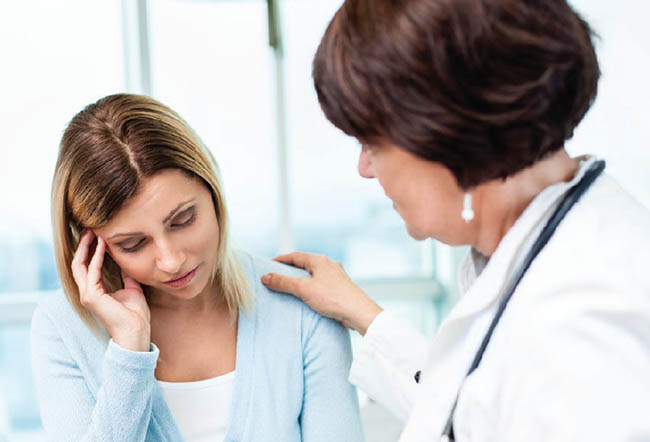
Regular headaches in the back of the head and temples require medical attention. Especially in cases where they last from 3 days and are accompanied by other symptoms.
Constant pain in the back of the head indicates pathologies and vascular spasms.
Syndromes left without medical attention can lead to irreversible changes.
Therapeutic actions
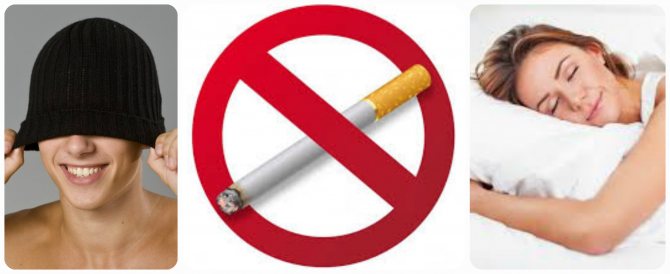
Ways to prevent headaches:
- Healthy sound sleep.
- Complete rest.
- Eliminating reasons for worries.
- Avoiding nicotine.
- Accurate adherence to medication dosage.
- Balanced diet without overeating.
- Timely consultation with a doctor.
- Ventilation of living and working spaces.
- Wearing hats.
If you have a headache in the back of the head and temporal part, it is enough to ventilate the room and wash with cool water. Then massage your shoulders, neck, head. Lie down comfortably and relax. Try to remove negative aspects that could lead to discomfort.
If it doesn’t let go, you should find out why your head hurts and puts pressure on your temples and the back of your head. The causes and treatment are determined by: neurologist, psychiatrist, ophthalmologist, angiosurgeon, otolaryngologist, vertebrologist, neurosurgeon.
Prevention
To avoid suffering from headaches, it is recommended to lead a healthy lifestyle, drink enough fluids, and walk a lot. In addition, doctors advise:
- Avoid overeating.
- Take full rest after work.
- Leave bad habits.
- Try to avoid conflicts.
- Ventilate the room regularly.
- Wear hats in cold and hot seasons.
Sedentary work and staying in one position for a long time have a detrimental effect on blood vessels and the spine. Be sure to take a break and do exercises that stimulate blood circulation. Many spinal diseases initially occur without pronounced symptoms, so for prevention you should reduce the load on your back, swim, eat well and avoid eating harmful foods.
Medications
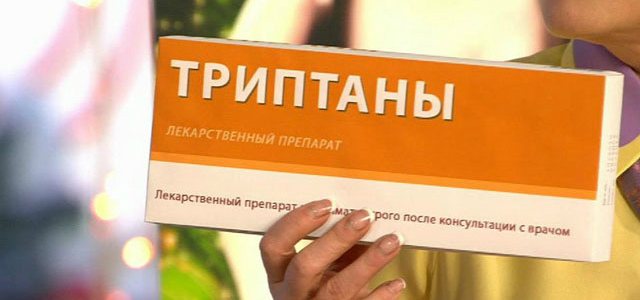
There is no point in enduring unpleasant sensations if you can take antispasmodics and painkillers.
However, they must be prescribed by a doctor; self-medication is unacceptable.
- For intense pain, triptans and opium analgesics are prescribed.
- For hypertension, diuretics are used to lower blood pressure.
- Anti-inflammatory, antipyretic help with suffering due to a cold or infection.
- Muscle relaxants and nootropic drugs are prescribed for psychogenic pain.
- physiotherapy;
- hirudotherapy;
- aromatherapy;
- manual therapy;
- homeopathy;
- reflexology;
- massage;
- swimming;
- folk methods.
Natural remedies

Traditional methods are effective for pain relief during treatment and prevention of suffering during remission.
Before use, consult a doctor to find out the safe dosage of infusions and decoctions, since some herbs have serious side effects.
- Clay lotions and wraps are completely safe products. A clay compress with mint or menthol oil is applied to the forehead for 15 minutes: 100 g of clay, steam table. l. mint or 3 drops of menthol oil, 100 ml of water.
- Quickly relieves pain by rubbing an oil mixture of lavender and wormwood into your temples. This is an excellent remedy for insomnia.
- Baths with basil oil help; massage with aroma oil: add 10 drops of chamomile oil and the same amount of lavender to olive oil (tbsp).
- Decoctions of St. John's wort, calendula, chamomile, thyme, and cornflower alleviate the condition. Add a tablespoon of herb to a glass of boiling water, wait 30 minutes, drink before meals, dividing the decoction into two or three doses.
- If pain increases due to intense exercise, you should consult a doctor. After collecting an anamnesis, if necessary, the doctor will prescribe an MRI of the brain, encephalography, angiography of cerebral vessels, and a blood test.
The pain is debilitating and interferes with life. Is it worth suffering? It makes more sense to find out and treat the cause.
If the pain syndrome is eliminated, the body should be strengthened to avoid relapses. Sleep and walk fully. Eat more natural products.
Give up unhealthy foods and old habits.
Headache is a state of discomfort that manifests itself both under the influence of external short-term factors (poor diet, weather conditions, stressful situations and increased fatigue), and as a result of the development of diseases or dysfunctions of the systems responsible for life. Often manifested pain in one of the parts of the head warns that a malfunction has occurred in the body, so you need to find and eliminate the cause of this symptom. In this article we will talk about headaches in the back of the head and temples, consider the causes of their occurrence and methods of treatment.
ethnoscience
To eliminate pain in the temples and back of the head, the healing qualities of natural substances are used.
Essential oils
They are known for their analgesic properties, strengthen the body’s protective functions, and have a positive effect on breathing. The most effective oils are lavender, mint and rosemary. A small amount of product is rubbed lightly into the temples. It is possible to increase the effect by combining equal amounts of mint and lavender oils.
Can be used as a cold bandage on the forehead. The composition in this case includes 3 drops each of lavender and chamomile oil, a drop of lemon, 100 ml of water.
Warm bath with essential oils of basil, sage, lavender, which are mixed in the amount of 5 drops with 1 tsp. olive oil, dissolve in water.
Pain in the temporal lobes of the head can be effectively treated with clay. To prepare the mixture, you need to dissolve 150 g of clay in 1/4 cup of warm water. Apply the product to gauze and apply to temples and forehead. The procedure lasts 20 minutes. If you add mint, the effect of the product increases.
Causes of pain in the back of the head
Head pain in the occipital region appears under the influence of the following psychogenic or pathological factors:
- Hypertensive crisis, developing as a result of hereditary disposition, age-related changes, a tendency to be overweight, smoking and alcohol abuse, and frequent stress.
- Mental sedentary work and fatigue caused by heavy physical labor.
- Overexcitement during sexual intercourse, causing increased blood pressure and throbbing occipital pain radiating to the temples.
- Inflammation of the occipital nerve. Muscle tension causes a numbing pain in the back of the head, which intensifies when moving the neck and head, sneezing, coughing. Attacks manifest themselves in the form of sudden shooting pains, their intensity increases in the morning hours.
- Deformation of the cervical and spinal vertebrae due to spondylosis or osteochondrosis. With a sedentary lifestyle, injuries or age-related changes, salt deposits form on the vertebrae, which over time transform into dense growths. As a result, blood circulation and normal circulation of cerebrospinal fluid through the vessels are disrupted, pressing occipital pain appears, accompanied by tinnitus, stiffness of movements of the head and neck.
- Damage to the vertebral artery. The disease occurs against the background of cervical osteochondrosis. When the vertebral artery is compressed, blood flow to the brain is hampered, pain in the back of the head, dizziness develops, coordination of movements is impaired, and reflex functions are reduced.
- Cervical migraine. It occurs when there is dysfunction of the vestibular apparatus; attacks are accompanied by intense occipital pain, decreased hearing and vision, and dizziness.
- Post-traumatic syndrome. Periodic pain is a consequence of previously received injuries to the back of the head or cervical spine, in most cases they are seasonal in nature, aggravated by changes in atmospheric pressure and weather conditions.
Frequent occurrence of occipital pain indicates pathologies that cause tension and spasms of blood vessels. To avoid the development of complications in the structure of the brain due to improper blood circulation, you need to visit a doctor, identify the cause of the pain syndrome and undergo treatment.
Diagnostics
Pain in the temples requires proper treatment, especially when it is throbbing and occurs frequently. However, for proper treatment, the patient must undergo an examination to identify the specific cause of the disorder.
| Diagnostic method | Peculiarities | Cost and venue |
| General examination and questioning of the patient | The first stage of the examination, during which the doctor assesses the patient’s condition, clarifies the time of onset and cessation of pain, and determines the conditions under which it appears. Based on the data obtained, the doctor determines the advisability of using one or another diagnostic method. | Free of charge in every clinic |
| Biochemical and clinical blood tests | A standard method that allows you to assess the condition of blood vessels, heart, blood system, and also identify signs of inflammation. The procedure involves taking blood from a patient’s vein and then studying it in a laboratory setting. | Costs approximately 300-600 rubles. Carried out in any medical institution |
| Blood test to detect bad cholesterol levels | This method also involves taking blood from a patient’s vein and is prescribed when it is necessary to confirm or refute the presence of atherosclerosis. | It is carried out in various clinics and special laboratories, the price is approximately 500 rubles. |
| X-ray of the skull and spinal column | An additional diagnostic method that allows you to study the spinal column, intervertebral discs, and the skull. The specialist examines the X-ray images and then makes a final diagnosis. | It is carried out in every clinic, the price ranges from 300-400 rubles. |
| Magnetic resonance imaging | The most effective diagnostic method, in which you can study the spinal column and brain, detect even minor deviations that provoke pain. | The cost of the procedure is approximately 2000-4000 rubles. It is carried out in clinics equipped with special equipment. |
| Angiography of head and neck vessels | An additional diagnostic method, which involves studying blood vessels using special instruments, a specialist can see areas of blockage of blood vessels, as well as areas in which narrowing is observed. The result allows you to more accurately determine the cause of the violation. | It is carried out in every clinic that has equipment, the price is approximately 700 rubles. |
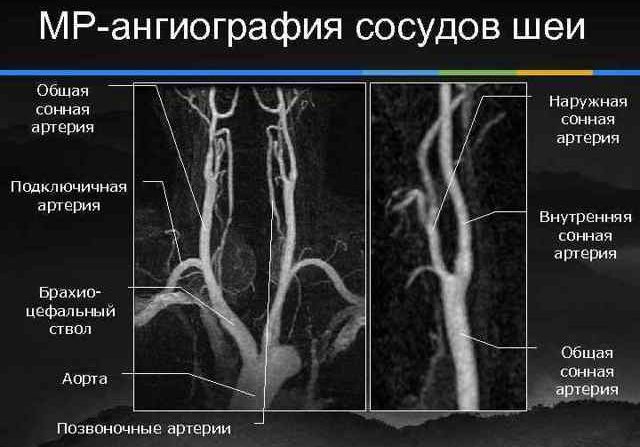
Magnetic resonance imaging is considered the most effective method, which allows detecting abnormalities at the initial stage and does not have a negative effect on the body. Despite this, to obtain a complete clinical picture, a full diagnostic examination is required.
Causes of pain in the temples
Temporal pain can develop as a result of the following reasons:
- Disruption of the circulatory system, causing migraine attacks and arterial hypertension.
- Injuries, congenital or acquired pathologies that provoke cerebral hypertension.
- Infectious and viral diseases - sore throat, ARVI, sinusitis, conjunctivitis, sinusitis or otitis media.
- Toxic, drug or alcohol poisoning.
- Nervous or physical stress, causing temporal and occipital pain at the same time.
- Inflammation of the arterial vessels in the temporal zone, with acute pain from the temple area transferred to the back of the head and neck.
- Hormonal dysfunction that occurs during adolescence and menopause in women, as well as during menstruation and pregnancy.
- Osteochondrosis. Discomfort in one of the temples, which occurs against the background of occipital pain, is the result of clamping of the vertebral artery and disruption of blood flow.
Pain, localized simultaneously in the back of the head and temples, requires a careful approach to finding the root cause of its development and the nature of its origin.
How to treat headaches in the back of the head and temples
Considering that frequent headaches in the back of the head and temples are a sign of disruption of life-support systems or are caused by psychogenic factors, treatment should be aimed primarily at suppressing the cause of their occurrence. This may require examination by a neurologist, vertebrologist, otolaryngologist or ophthalmologist.
To relieve pain during an attack, medications are used in the form of tablets or injections with antispasmodic and analgesic effects. For mild pain, it is enough to take a tablet of Citramon, Tempalgin or Spasmil. If intense pain develops, it may be necessary to administer triptan or opium medications.
Describe your problem to us, or share your life experience in treating the disease, or ask for advice! Tell us about yourself right here on the site. Your problem will not go unnoticed, and your experience will help someone! Write >>
With the development of intracranial or arterial hypertension, pain relief can be facilitated by reducing pressure on the brain. To do this, they take diuretic drugs, the nomenclature and dose of which must be previously agreed upon with a specialized specialist.
Temporal and occipital pain, as a symptom of colds and viral diseases, can be reduced with anti-inflammatory drugs with antipyretic effects - Paracetamol or Nurofen. A vinegar compress is also an effective remedy. To do this, vinegar is diluted in equal parts with water, and a napkin soaked in this solution is applied to the frontal and temporal parts.
For psychogenic pain, the first step is to reduce the impact of irritating factors. In most cases, the patient is prescribed nootropic drugs or muscle relaxants.
Auxiliary treatment methods include physiotherapeutic procedures, reflexology, massage and swimming courses, homeopathy, aromatherapy and healing using traditional medicine.
